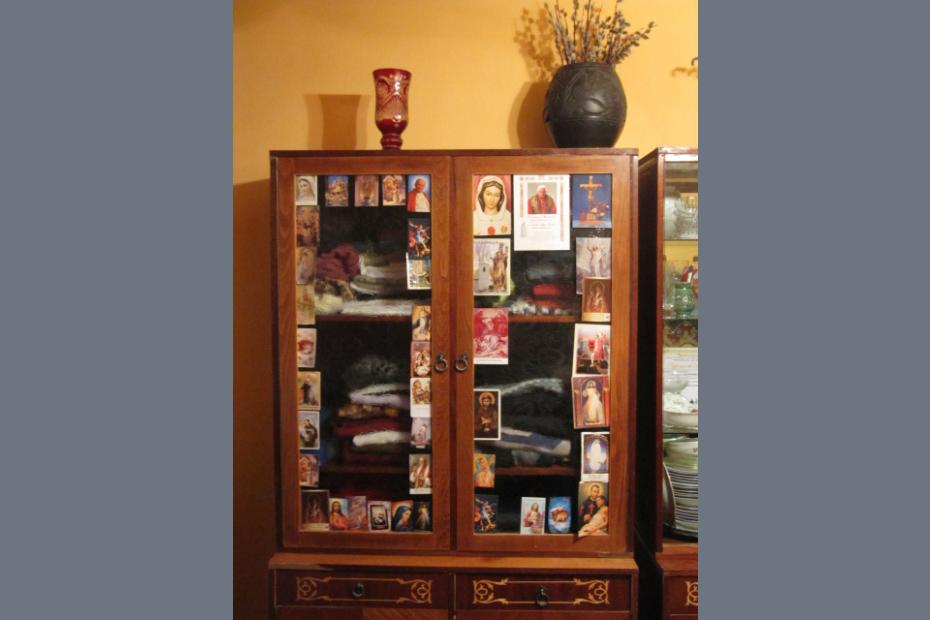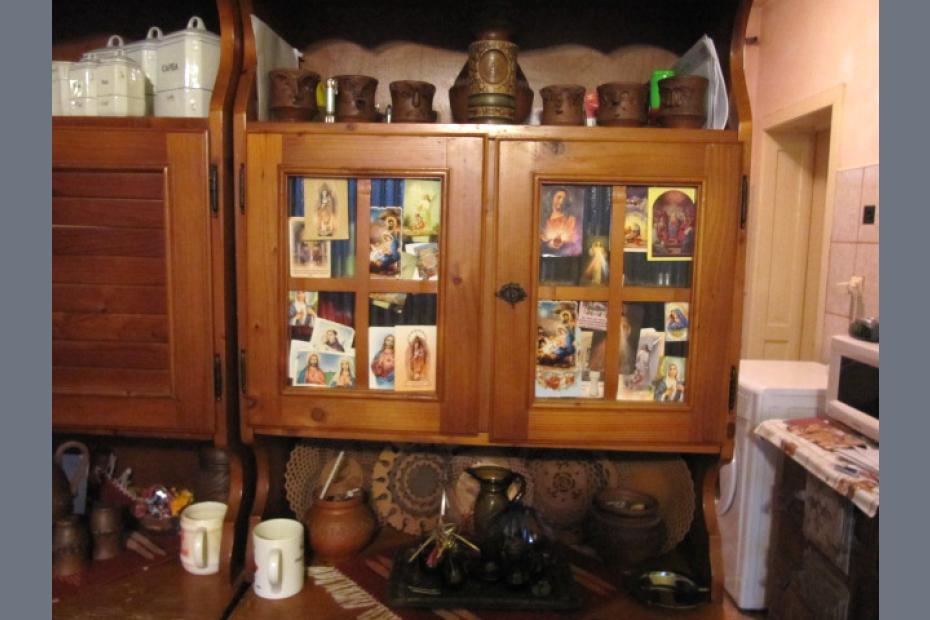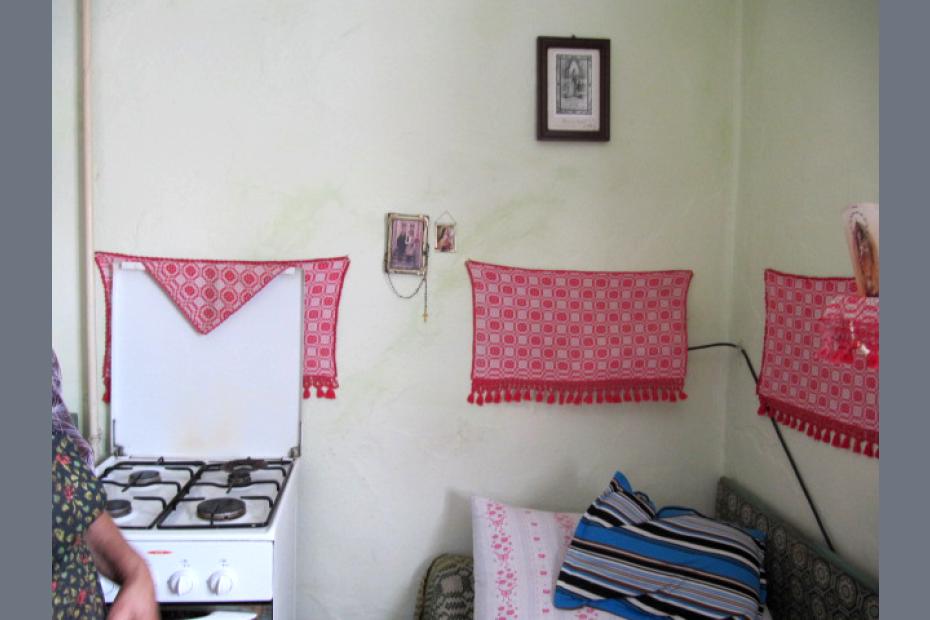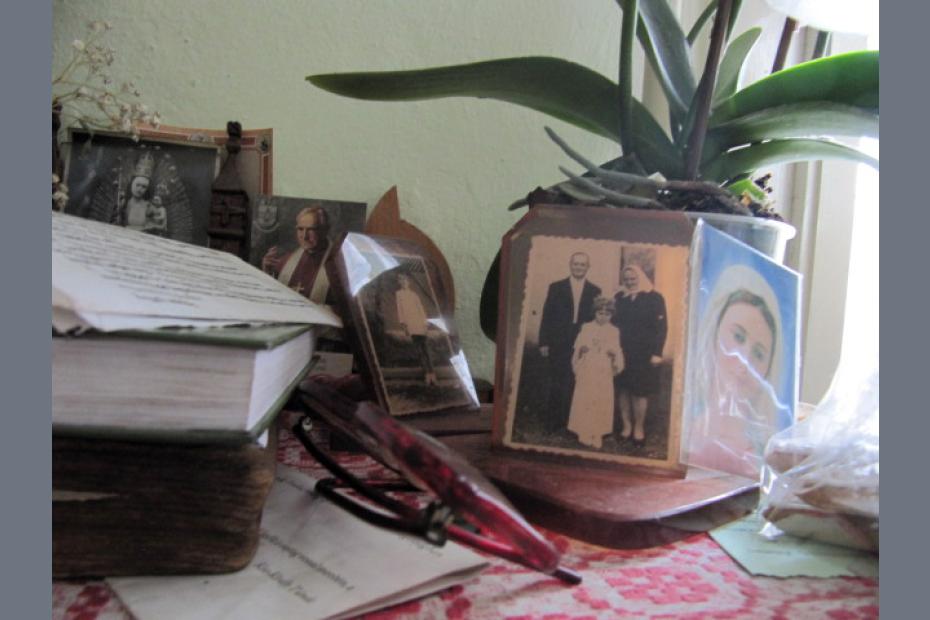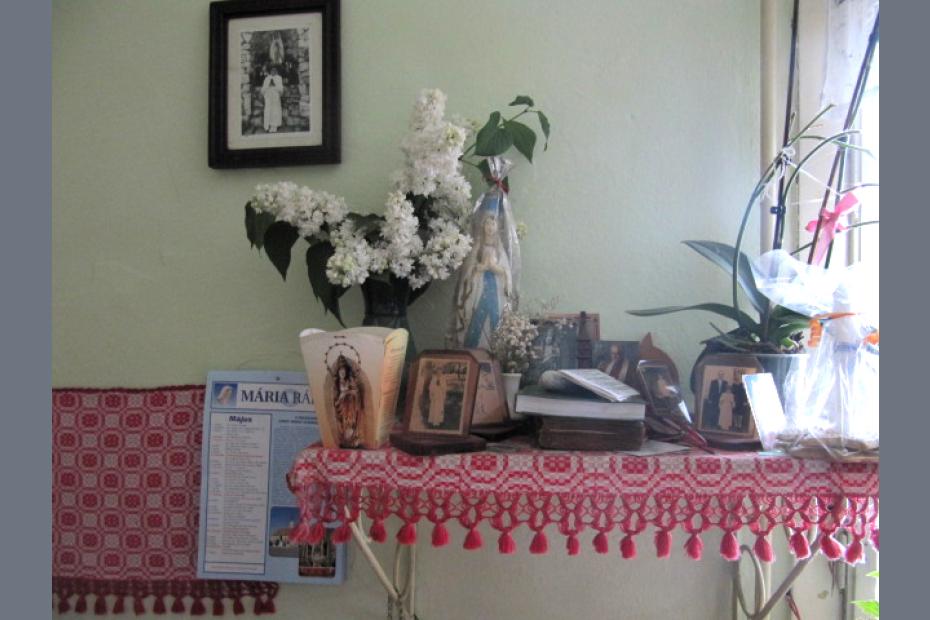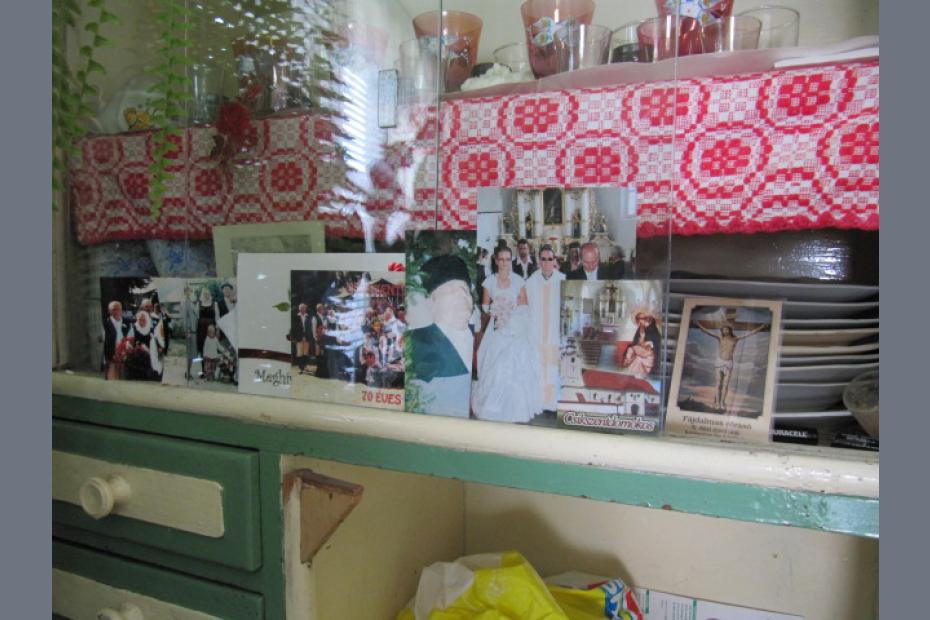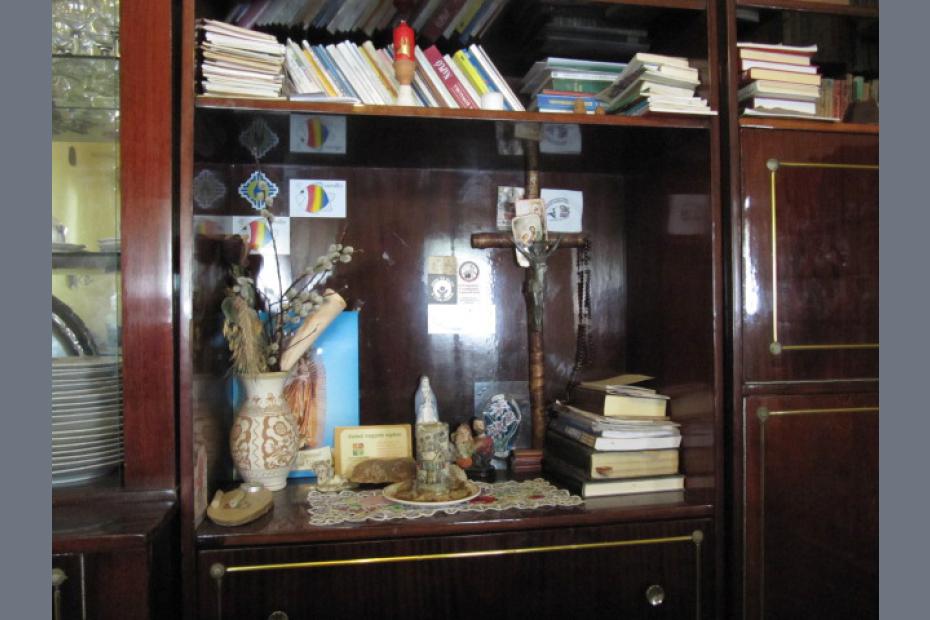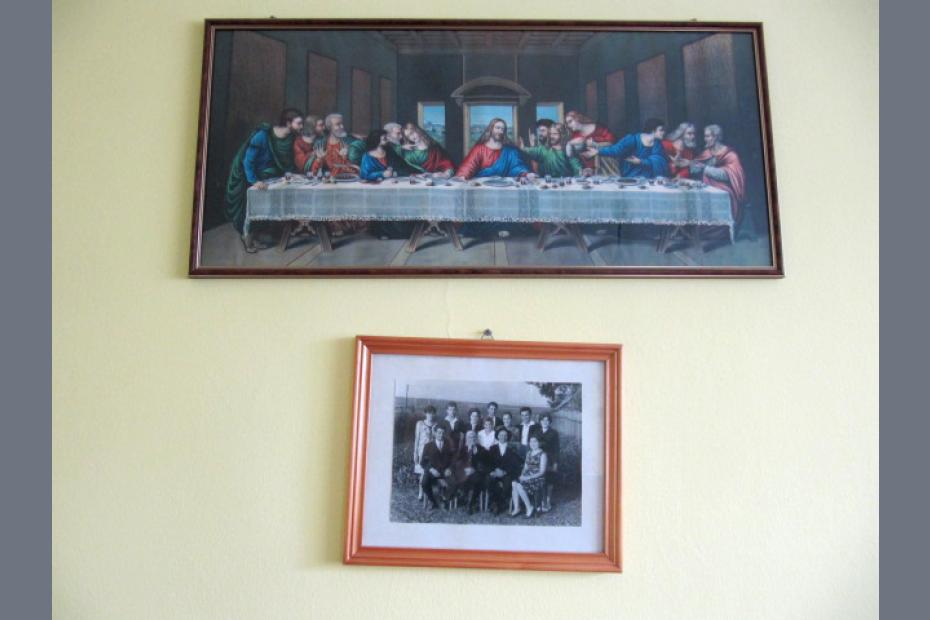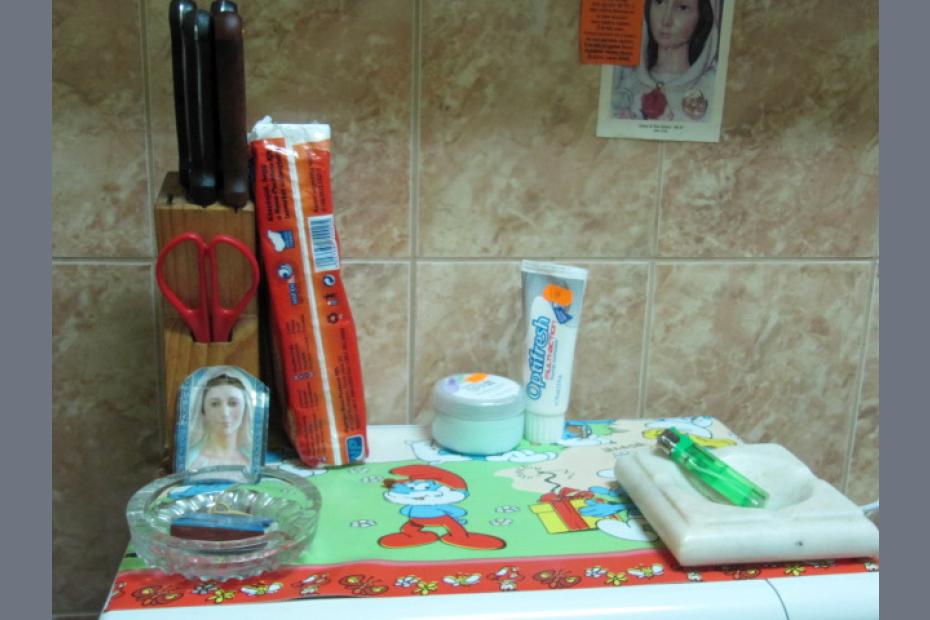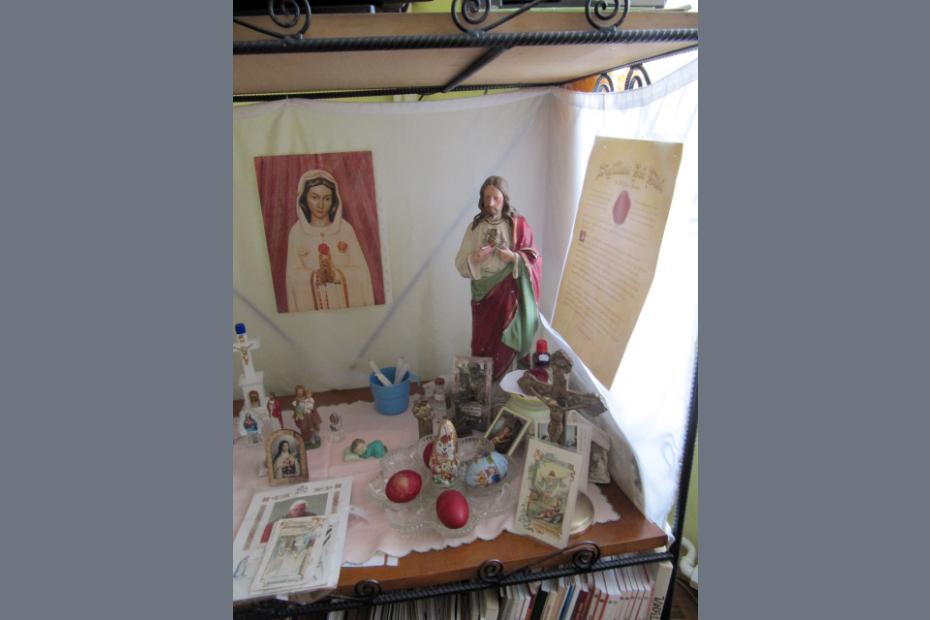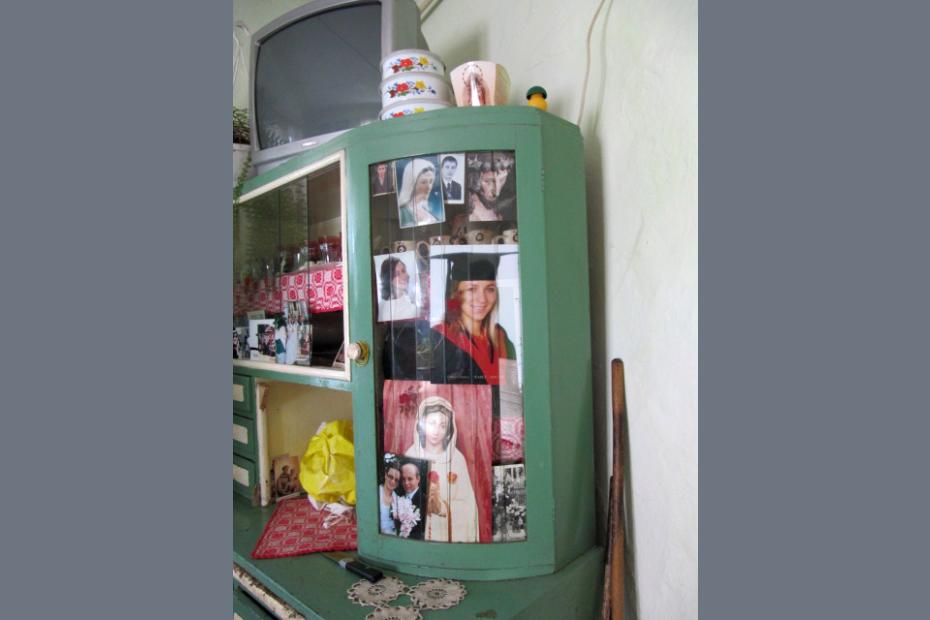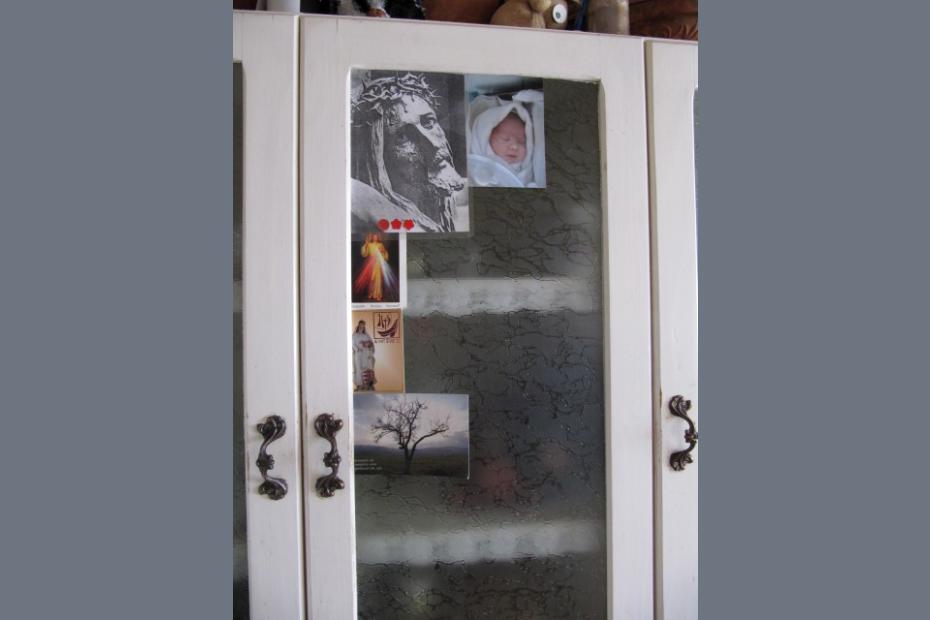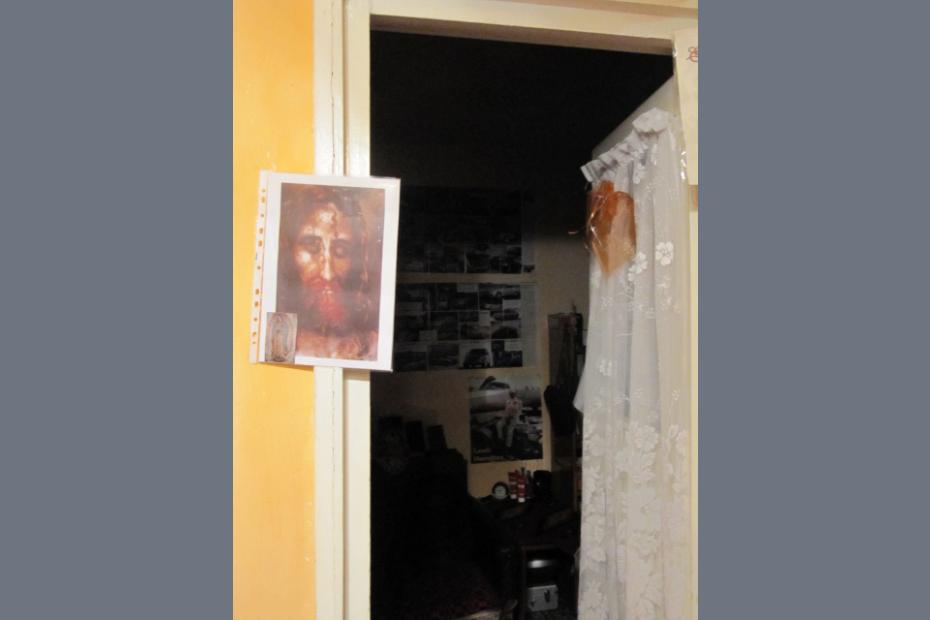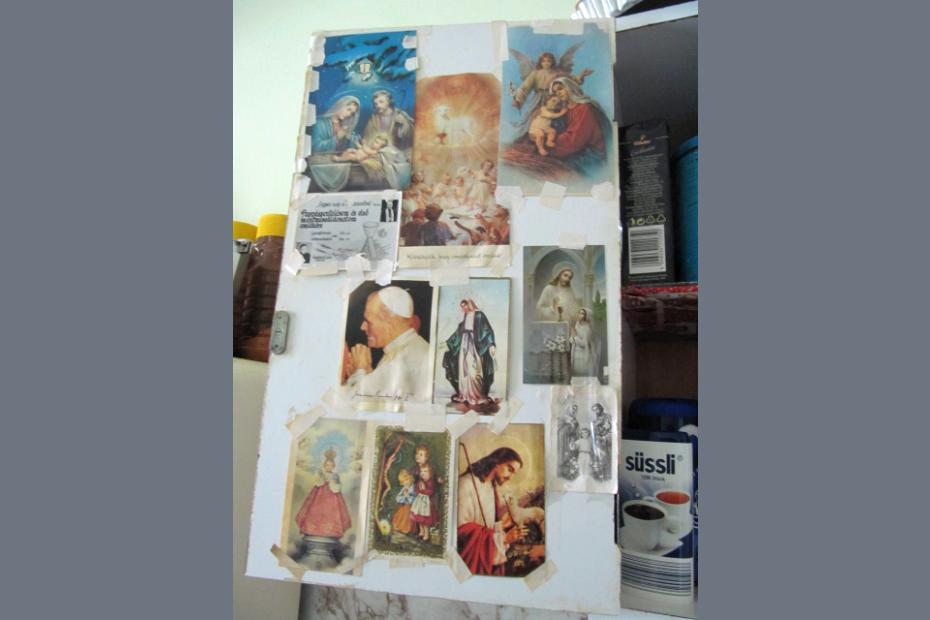Catholics living in Romania say that they know they are in a Catholic family’s home, even without asking, if they see pictures of saints and the Virgin Mary on refrigerator doors, kitchen cabinets, and bookcases. These pictures are not only a way of decorating the home, but they also help people pray and play an important role in providing religious education for children. These pictures are often in rooms where people eat meals, go to sleep, watch television, or do other daily activities. Catholics say that the pictures will help children feel that the saints are part of the family, people who they feel comfortable with and see every day. The images are often easy to find and allow devotees to remember the saints and say prayers to them as they are washing dishes, making coffee in the morning, or changing their clothes for bed. Some say that they like to feel that the Virgin Mary is around them all the time when they are at home. They will place pictures of her all throughout their homes – on every wall and surface – so that no matter where they look, they can see a picture of the Virgin. Devotees will often simply say that it “feels good to look at the Virgin Mary,” but they also believe that they can say quick prayers for help where these images can be seen in the course of activity in the home.
Other devotees prefer to hang just a few, widely spaced pictures of saints on their walls. They say that the room feels “clean” and “open” if it is decorated in this way. But devotees still find ways to collect and look at the large number of prayer cards, statues, and other Catholic mementos. They will often put the statues and pictures of saints on the back sides of cabinet doors in their kitchens, where they can look at them whenever they reach in for a cup or a plate. Or they will make altars on shelves under their televisions. They like having these pictures and statues close at hand because they can lend them to friends or children who are leaving on a trip or they can add to their collection when someone comes back from a pilgrimage. They can also take statues and pictures out from the altar to help them remember to pray during certain seasons. Devotees will take out a statue of the Sacred Heart of Jesus and leave it on the dining room table in July, the month recommended for displaying these images.
Some devotees will also arrange their family photographs so that children’s pictures are next to pictures of the saints, especially the Virgin Mary. Women feel that it is their special obligation to teach their children about devotional practice, a feature of Catholic culture that can be found in many regions of the world.
However, in Romania this belief has a special meaning, because before 1989 priests were not allowed to hold catechism classes for children in schools. Children still receive very little religious instruction in schools today; even Catholic schools in towns with majority Catholic populations offer only one hour of catechism a week. Museum curators have tried to enhance these offerings by inviting school groups to exhibits of altar statues and other Catholic art. However, these exhibits are often limited to museums in cities and towns, and rural parents complain that their children are left out of these opportunities. Catholic adults who recall visiting museums as children remember the objects they were allowed to touch and hold in these exhibits, which suggests the difficulty that museum curators and teachers face in trying to spread devotional practices when prayer cards are displayed in glass cabinets.
Still, providing religious education at home is not a simple matter. Women say that they feel like the Virgin Mary understands them because she knows it is difficult to simply stop, once children grow up, telling them when to ask for help from the saints and what to pray for. Many children in Romania continue to live with their parents well into adulthood, because it is often very expensive to purchase one’s own home. Adult children might refuse or complain when parents demand that their children pray or attend Mass, leading to arguments that are difficult to avoid when families must eat and sleep together in the same rooms in small apartments. Putting pictures of the Virgin Mary up in their homes helps them continue instructing their children about the Virgin Mary and the saints without threatening peace and harmony in the household.
